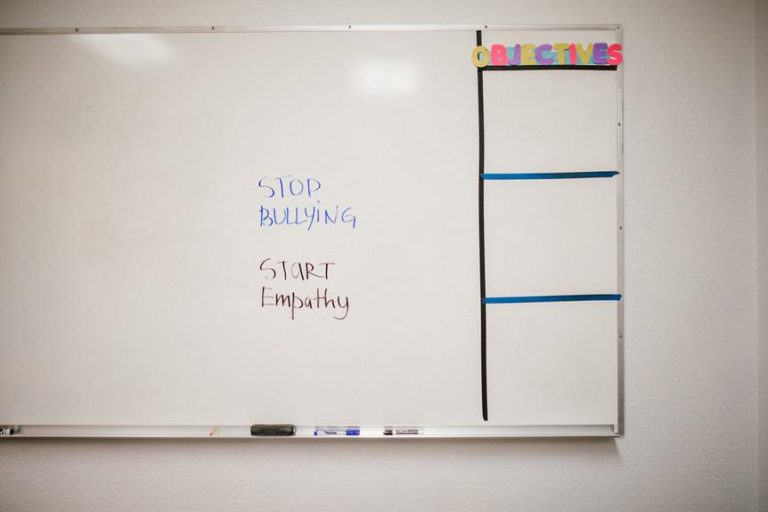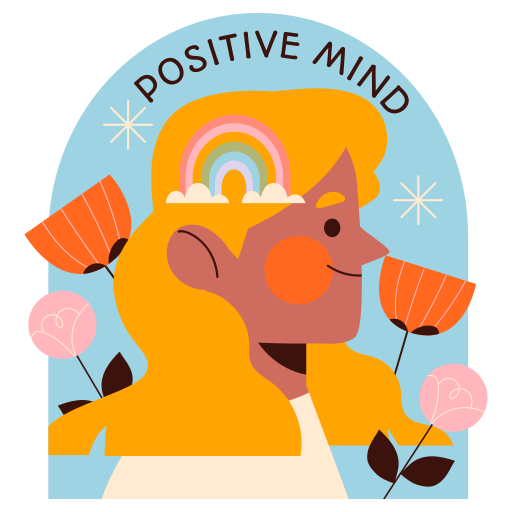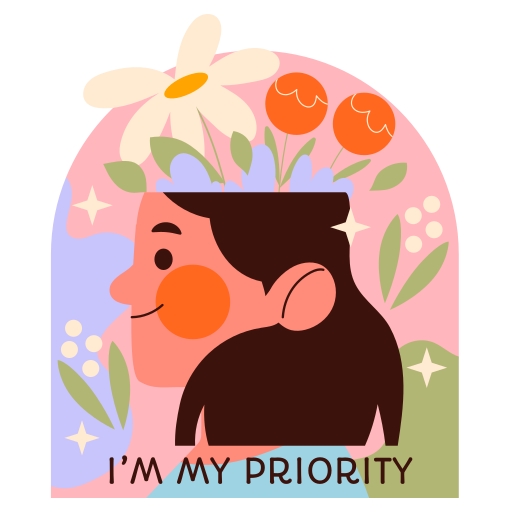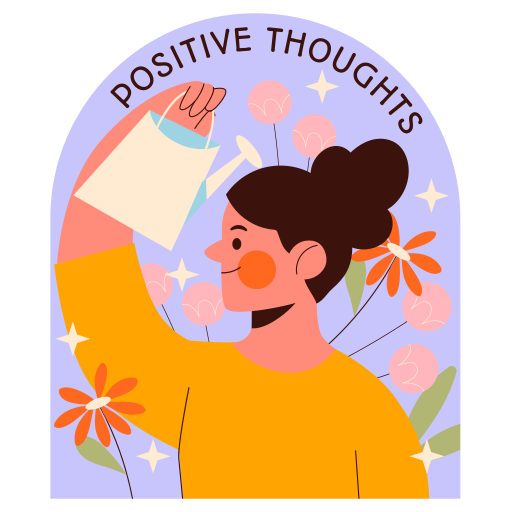Have you ever wondered about the secrets of how you see yourself? Let’s explore the difference between self-concept and self-schema. Picture this: self-concept is like a big puzzle piece of who you are, including your traits and values. On the other hand, the self-schema is like zooming into specific parts of that puzzle, focusing on your beliefs in different areas of your life.
By understanding these concepts, you can unlock a treasure trove of insights into how you think and make decisions. It’s like shining a light on the hidden parts of yourself, helping you grow and become more self-aware. So, are you ready to dive into the world of self-discovery and uncover the mysteries of your own mind? Let’s explore together and see what we can find!
What is the difference between self-concept and self-schema?
Self-concept reflects a more flexible and encompassing view of oneself, focusing on overall perceptions like abilities and values. Conversely, self-schema consists of specific beliefs within distinct domains, such as academic or social aspects, guiding behavior and thoughts. The difference lies in the adaptability and broadness of self-concept versus the rigidity and specificity of self-schema, which influences individuals’ self-perceptions and behaviors.
Flexibility Vs Rigidity
Understanding yourself can be like figuring out a puzzle, with two key pieces: self-concept and self-schema. These pieces differ in how flexible or rigid they are:
- Flexibility:
- Self-concept is like a chameleon, changing with new experiences and ideas. It’s like having a flexible mirror that shows different sides of yourself.
- Rigidity:
- On the other hand, self-schema is more like a sturdy frame, providing a stable outline that shapes how you think and act in certain areas of your life.
- Thinking Patterns:
- Self-concept covers a wide range of thoughts about who you are, while self-schema focuses on specific thoughts that affect your actions.
- Guiding Behavior:
- Self-concept guides your behavior in general, no matter the situation, while self-schema steers you in specific scenarios.
Broad Vs Specific
Understanding the difference between self-concept and self-schema is like looking at the big picture versus zooming in on specific details about yourself. Self-concept is like a broad painting of who you are, including your talents, values, dreams, and personality. On the other hand, self-schema is like focusing on specific parts of yourself, like how you see yourself in school, with friends, or in sports. To connect these two ideas, you need to know yourself well and be honest about what you believe and how you see yourself. Check out the table below to see the key contrasts between self-concept and self-schema:
| Aspect | Self-Concept | Self-Schema |
|---|---|---|
| Focus | General ideas about yourself | Specific thoughts in different areas |
| Scope | Big picture | Detailed and specific |
| Influence | Overall view of yourself | Guides your thoughts and actions in specific areas |
Overall Vs Domain-Specific
Self-concept and self-schema focus on different aspects of how we see ourselves. Self-concept is like a big picture of who we are, including our general beliefs and perceptions. On the other hand, self-schema zooms in on specific beliefs we have about ourselves in different areas like school, friends, or sports.
- Self-concept gives a broad view of ourselves, while self-schema looks at specific beliefs in different parts of our lives.
- Self-concept can change and evolve over time, while self-schema tends to stay more fixed and steady.
- Understanding how self-concept and self-schema work together involves being aware of ourselves and being honest about our thoughts.
- Self-concept shapes our core identity and self-esteem, while self-schema guides how we act and make choices in specific areas of our lives.
Understanding these concepts can help us navigate our self-perception and how we interact with the world around us.
Perception Vs Beliefs
The big difference between self-concept and self-schema is how you see yourself overall versus in specific parts of who you are. Self-concept is like a big picture of how you view yourself, including your beliefs, values, and traits. On the other hand, self-schema is all about the specific beliefs you have in different areas like school, friends, or sports, which help you make sense of things in those parts of your life. Self-concept is like putting together all your views to form one image of yourself, while self-schema helps you understand and react to situations based on what you believe about those specific areas. Knowing this helps you have a full and detailed view of yourself, combining how you see yourself overall and in different parts of your life.
Adaptability in Thinking
When it comes to understanding ourselves, we can look at two important things: self-concept and self-schema. These help us figure out who we are and how we see ourselves.
- Scope and Flexibility: Self-concept is like a big picture of ourselves. It includes lots of different parts of who we are, like our beliefs, values, and identity. It’s like looking at a whole puzzle of ourselves.
- Specificity and Rigidity: On the other hand, self-schema is more like zooming in on specific parts of ourselves. It focuses on certain areas or experiences that make up who we are. It’s like looking closely at one piece of the puzzle.
- Influence on Thinking and Behavior: Self-concept affects how we act and think in general, like our attitudes and behaviors. Self-schema, though, guides us in specific situations, helping us make decisions based on those specific parts of ourselves.
- Navigating Self-Perception: Understanding the difference between self-concept and self-schema helps us learn more about ourselves, how we interact with others, and how we grow. It’s like having a map to explore and understand ourselves better in the world of social psychology.
Examples of the difference between self-concept and self-schema?

Let’s understand the difference between self-concept and self-schema in a simpler way. Self-concept is like a big picture of how we see ourselves – our values, goals, and personality. On the other hand, self-schema is more like specific beliefs we have in different areas like school, friends, or sports.
For example, if someone thinks they are kind and helpful in general (that’s self-concept), their social self-schema might include how they act in social situations – like being outgoing or shy. Self-concept gives us an overall view of ourselves, while self-schema focuses on specific parts of our lives, shaping how others see us based on these specific beliefs we have.
What is self-concept
Self-concept can be defined as an individual’s perception of their own abilities, values, goals, and personality traits. It forms the foundation of one’s self-understanding, encompassing both the conscious and unconscious beliefs about oneself. Components of self-concept include self-esteem, self-image, and ideal self, all contributing to a comprehensive view of personal identity.
Definition of Self-Concept
Self-concept is all about how you see yourself. It’s like a puzzle made up of your skills, values, dreams, and personality. Your self-concept grows and changes as you learn new things about yourself.
Imagine a mirror that reflects how you think about yourself. This mirror is your self-concept. It’s super important because it shapes how you see yourself and how you interact with the world around you. As you discover more about who you are, your self-concept grows. It’s like adding pieces to your puzzle to create a clearer picture of yourself. Understanding your self-concept is like having a map to guide you through life. Your self-concept is like a compass that helps you navigate your journey. It influences your thoughts, actions, and how you connect with others. By understanding your self-concept, you can boost your self-awareness and become the best version of yourself.
In a nutshell, self-concept is the foundation of your identity. It helps you understand yourself better and paves the way for personal growth. So, embrace your self-concept and let it guide you on your exciting journey of self-discovery and development!
Components of Self-Concept
Self-concept is like a mental mirror that shows us how we see ourselves. It’s made up of different parts that include what we believe, value, can do, and what kind of person we are. This self-concept helps us understand ourselves in areas like school, with friends, and even how we feel about our bodies. It’s like a big picture of who we are, our strengths, weaknesses, dreams, and what makes us unique. Knowing all these things helps us grow, learn more about ourselves, and be happy. Understanding these parts of self-concept is like having a special map to discover and improve ourselves.
Types of Self-Concept

The exploration of different types of self-concept delves into distinct dimensions that individuals use to define themselves. Understanding the developmental aspects of self-concept sheds light on how these perceptions evolve over time. Moreover, cultural influences play a significant role in shaping the various facets of self-concept and ultimately impacting an individual’s behavior.
Dimensions of Self-Concept
Understanding different parts of how you see yourself can give you a better picture of who you are and how you fit into the world around you.
- Self-Image: This is all about how you view yourself physically and in terms of your personality.
- Self-Esteem: Self-esteem is like a report card for how much you value yourself and how confident you feel.
- Ideal Self: Your ideal self is like a superhero version of you, with all your dreams and goals rolled into one.
- Social Self: This is how you see yourself when you’re around others and in different social situations.
Each of these pieces makes up a unique part of how you understand yourself. They affect how you act, how you feel, and how you connect with the world. Knowing about these parts is super important for building a strong and positive self-image.
Developmental Aspects
As kids grow, their understanding of themselves grows too, shaping their self-concept. At first, they focus on simple things like how they look. But as they get older, they start to see themselves in a more detailed way. They recognize their emotions, their personality, and how they interact with others. Important milestones in this journey include realizing their gender, understanding their body, grasping their feelings, and identifying their traits. With time, children become more self-aware, which helps them build a more complex self-concept. How kids become aware of themselves really affects how they see themselves overall and what kinds of self-concepts they have.
Cultural Influences
Cultural influences play a big role in how people see themselves. These influences come from the values and norms in different societies. Let’s look at how culture shapes self-concept:
- In some cultures, like in the US, people focus on being independent and achieving personal goals. This leads to valuing self-expression and freedom.
- Other cultures, like in Japan, stress harmony within groups and being connected to others. Here, self-concept is tied to relationships and social roles.
- These cultural differences affect how individuals view themselves in relation to others. They also impact their beliefs and actions.
- Understanding how culture shapes self-concept helps us see the diverse ways people form their identities and interact with others.
In a nutshell, where we come from influences how we see ourselves and how we fit into our communities.
Impact on Behavior
Self-concept is like a mirror that shows us who we are. It affects how we behave by shaping our beliefs and values. Let’s break it down into three types:
- Social Self-Concept: This is like a map for how to act in different social situations. It guides us based on what we think others expect from us.
- Ideal Self-Concept: This is like a cheerleader pushing us to reach our dreams and goals. It motivates us to work towards becoming our best selves.
- Self-Schema: This is like a toolbox full of beliefs about different parts of our life, like school, friends, or sports. It helps us make choices based on what we think about ourselves in those areas.
Understanding these types of self-concept can help us see how our thoughts about ourselves shape the way we behave and interact with the world.
Role of Self-Concept in Identity
Understanding who you are is all about knowing your self-concept, which shapes how you see your abilities, values, and personality traits. This self-view is super important because it affects how you act, make choices, and connect with others. Let’s break down why self-concept is key to your identity:
- Influences on Behavior: Your self-concept guides how you behave and interact with the world around you.
- Always Changing: Your self-concept isn’t set in stone; it grows and changes as you learn, reflect, and grow.
- Mental Health Matters: Feeling good about yourself is linked to better mental health and overall happiness.
- Personal Growth Booster: Improving your self-concept is crucial for growing as a person, reaching your goals, and finding joy in life.
What is self-concept

Self-concept encapsulates an individual’s fundamental beliefs about themselves, covering their core self-beliefs and understanding of personal attributes. It serves as the foundation upon which one builds their identity and shapes their perceptions of their abilities and qualities. Understanding self-concept is crucial as it influences behavior, decision-making, and overall well-being.
Core Self-Beliefs Definition
Our core self-beliefs are like the building blocks of who we are. They include things like our values, abilities, and personality traits. These beliefs shape how we see ourselves and how we interact with the world around us.
Our self-concept is like a puzzle that puts together all the pieces of our identity. It’s super important because it affects how we behave, make decisions, and connect with others. And guess what? Our core beliefs aren’t set in stone – they can change as we grow, learn, and experience new things.
Knowing and understanding our self-concept is key to feeling good about ourselves and figuring out who we are. It’s like a map that guides our self-esteem and helps us form our identity. So, it’s pretty cool to pay attention to what we believe about ourselves!
Personal Attributes Understanding
Understanding personal attributes is essential for shaping how we see ourselves. These attributes, like our abilities, values, goals, and personality traits, have a big impact on our self-concept. Let’s break it down:
- Abilities: Our abilities shape what we believe we can do and how capable we feel.
- Values: Our values influence the things that are important to us and how we make decisions.
- Goals: Goals help us focus on what we want to achieve and keep us motivated.
- Personality Traits: Our personality traits define how we behave and interact with others.
Type of Self-Schemas
Different types of self-schemas play crucial roles in shaping our self-perception. Academic self-schema influences how we view our abilities and performance in educational settings, while social self-schema guides our interactions and perceptions in social situations. Physical self-schema impacts our beliefs about our appearance, health, and physical capabilities, and emotional self-schema shapes our understanding of our emotional responses and coping mechanisms. Each type of self-schema contributes uniquely to our self-concept and influences our thoughts, behaviors, and interactions in various aspects of life.
Academic Self-Schema Types
How do different types of academic self-images affect how we learn and handle school challenges? Academic self-images are super important because they can change how we feel about schoolwork and exams. Let’s break down four ways these self-images can make a big difference:
- Motivation: How we see ourselves academically can make us feel more or less excited about learning new things.
- Believing in Ourselves: Our academic self-images can change how confident we feel about doing well in school.
- Doing Well: The way we think about ourselves in school can directly impact how good our grades are.
- Who We Are: Our academic self-images help shape how we see ourselves in school and what we think we can achieve.
Social Self-Schema Diversity
Social self-schema diversity refers to the various beliefs individuals have about their social roles, relationships, and interactions. These beliefs act as mental frameworks that shape how people understand and react to social situations. Differences in social self-schemas can come from cultural norms, society’s expectations, and personal experiences. They play a big role in guiding how we behave in social settings, affecting how we communicate and the quality of our relationships with others. By studying social self-schemas, researchers learn a lot about how people think and act in social situations. Understanding the diversity of social self-schemas helps us grasp the complexities of human interactions and the dynamics of social settings.
Physical Self-Schema Variations
Physical self-schema variations refer to how we see ourselves when it comes to our physical appearance, abilities, and health. These beliefs about our body image, athleticism, coordination, and physical health make up our physical self-schemas. They can be influenced by things like societal standards, personal experiences, and comparing ourselves to others. These variations in how we see ourselves physically can affect our self-esteem, how satisfied we are with our bodies, and our overall self-concept. By understanding and addressing these variations, we can improve our self-perception and well-being.
Work-Related Self-Schemas
Work-related self-schemas are like a blueprint for how we see ourselves at work. They include things like our skills, strengths, and how we do our job. These beliefs shape how we think about ourselves professionally and guide our actions at work. Stuff like being a good leader, solving problems, how we talk to others, and our career goals are all part of these work-related self-schemas. We build these ideas from past work experiences, feedback from coworkers, and thinking about what we’re good at and where we need to improve. Understanding and working on our work-related self-schemas can help us grow in our careers, feel happier at work, and achieve more success.
Changing Self-Schemas

When we talk about changing how we see ourselves, it’s like giving our self-image a makeover. It’s all about taking a good look at our thoughts and beliefs to make them better. Here are some cool ways to help you do just that:
- Challenge Negative Thoughts: Sometimes our thoughts can be a bit mean to us. It’s important to question those thoughts and tell them they’re not the boss of us!
- Embrace a Growth Mindset: Think of your mind as a big garden that can always grow and change. Embracing this idea can help you see yourself in a more positive way.
- Seek Support: It’s totally okay to ask for help when you need it. Talking to someone you trust, like a friend or a counselor, can give you the boost you need to feel better about yourself.
- Identify Origins: Ever wonder why you feel a certain way about yourself? It could be because of something that happened in the past. Understanding where these feelings come from can help you challenge and change them for the better.
Importance of Self-Awareness
Understanding who we are is super important, and that’s where self-awareness comes in. It’s all about knowing our strengths, weaknesses, and what makes us unique. By taking time to think about ourselves and getting feedback from others, we can improve how we see ourselves. This helps us figure out where we can grow and become better versions of ourselves.
Self-awareness helps us be more real and satisfied with who we are. It guides us to match how we see ourselves with how we actually are. So, when we understand ourselves better, we can work on becoming the best we can be. It’s like putting the puzzle pieces together to see the big picture of who we are.
Aligning Self-Concept and Self-Schema
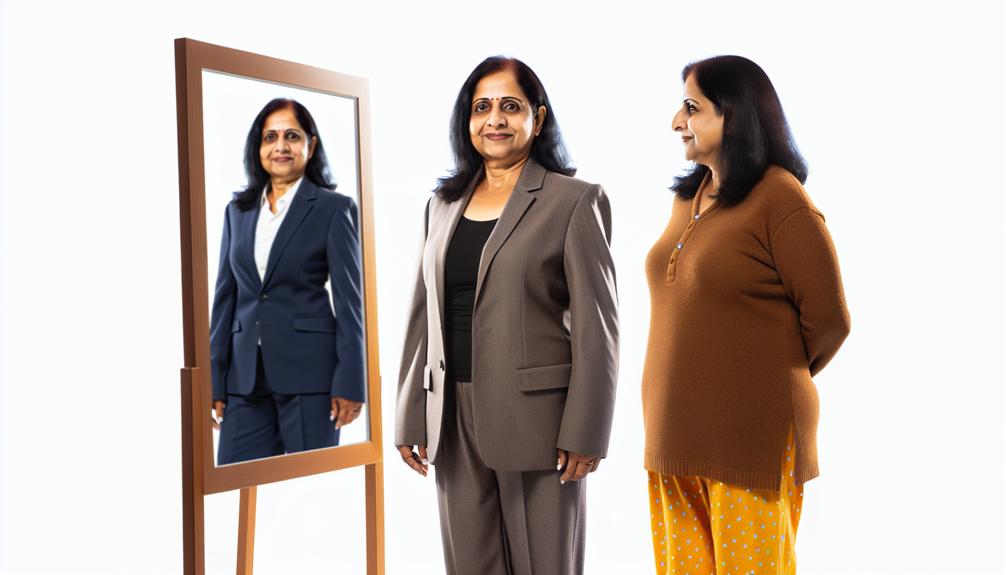
When we talk about aligning how you see yourself with what you believe in different areas of your life, it’s like putting together puzzle pieces to create a complete picture of who you are. This matching process is super important for getting a clear understanding of yourself. Here are some key things to think about when aligning your self-concept and self-schema:
- Spotting Differences: First off, it’s essential to notice where your overall self-image and specific beliefs about yourself don’t quite match up. This helps you see where your thoughts about yourself might not match up with what you do or experience.
- Making Things Match: The goal is to make your beliefs about yourself consistent across all parts of your life. This consistency helps you have a steady sense of who you are and reduces any inner conflicts.
- Being Flexible: It’s okay to adjust some of your beliefs to better fit with how you see yourself overall. Being open to change can lead to personal growth and a more accurate view of yourself.
- Getting Input: It’s helpful to ask for feedback from people you trust. They can give you valuable insights into how well your self-image lines up with how you act and interact with others, which can make the aligning process smoother.
Benefits of Understanding Oneself
Understanding yourself is like looking in a mirror to see who you are. When we explore our self-concept, we get a better understanding of our skills, values, and personality. It’s like putting puzzle pieces together to create a picture of ourselves. At the same time, when we think about our self-schema, we can figure out what we believe in different areas of our lives. This helps us see how our beliefs affect the way we act. By knowing the difference between self-concept and self-schema, we can learn more about ourselves and how we behave. This helps us become more aware of who we are and how we can grow as individuals. By figuring out our strengths, weaknesses, and areas where we can improve, we can become more self-aware and grow personally. Understanding ourselves can also help us feel better mentally and accept who we are. It’s like taking the first step on a journey to discover more about ourselves and become better people.
Improving Self-Acceptance

To boost self-acceptance, it’s essential to recognize and embrace your strengths, weaknesses, and unique qualities without being too hard on yourself. Here are some ways to improve self-acceptance in a friendly and informative way:
- Be Kind to Yourself: Use positive self-talk and encouraging words to help you feel better about yourself. It’s like giving yourself a pep talk!
- Show Yourself Compassion: Treat yourself with kindness and understanding, especially when things don’t go as planned. It’s okay to make mistakes; we all do!
- Take Care of Yourself: Try activities like mindfulness and self-care to connect with yourself better. Taking time for yourself can help you love and accept who you are.
- Change Negative Thoughts: Remember, everyone has flaws and that’s part of being human. Try to see yourself in a more positive light to feel better about who you are.
How Does Self-Schema Impact Self-Concept in Communication?
Self-schema plays a significant role in selfconcept’s impact on communication. It shapes how individuals perceive themselves and interpret information. This, in turn, affects how they communicate with others. A positive self-concept can lead to more confident and effective communication, while a negative self-concept may hinder effective interaction.
Challenges in Self-Concept Alignment
Understanding who we are can be tricky sometimes. It’s like putting together puzzle pieces of ourselves to create a clear picture. But imagine if some pieces just don’t fit right – that’s how confusing it can get! This mix-up between how we see ourselves and how others see us can lead to feeling stuck or unsure about our true selves. Let’s break it down:
- Feeling Stuck: Ever felt like you’re going in circles with different beliefs about yourself? That’s frustrating!
- Lack of Clarity: Not sure who you really are? It’s like being lost in a foggy maze of uncertainty.
- Overcoming Challenges: But hey, we can bounce back and grow stronger even when things get tough!
To make sense of all this, we need to look deep inside, understand ourselves better, and accept that we’re always changing. By working through these challenges and embracing personal growth, we can aim for a better match between how we see ourselves and how others see us.
Frequently Asked Questions
What Is an Example of a Self-Schema?
An example of a self-schema could be a person’s deeply held belief about their level of artistic talent, guiding their perceptions and behaviors in creative pursuits. Self-schemas provide a structured lens through which individuals view themselves in specific domains.
What Is an Example of a Self-Concept?
An example of a self-concept is an individual viewing themselves as creative, compassionate, and adventurous based on their beliefs, values, and personality traits. Self-concept shapes self-identity, influences behavior, and evolves with experiences and personal growth.
What Is the Difference Between the Self or Person Schemata?
The difference between self and person schemata lies in their scope; self-schema pertains to specific beliefs within domains, while the self-concept offers a broader view of one’s identity, encompassing values, traits, and goals. This distinction is crucial in understanding self-perception.
What Are the 3 Components of Self-Concept?
The three components of self-concept are self-image, influenced by external factors; self-esteem, reflecting one’s value and abilities; and the ideal self, representing aspirations. These aspects combine to shape an individual’s overall perception and understanding of themselves.









